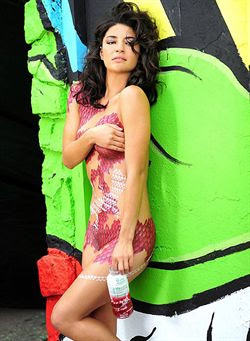Figurative painting reflects deep understanding of the artists, as it is depiction of the anatomy of human body. While painting a figure, an artist tries showing the emotions through such paintings. It is an endeavor to recreate the psyche of the person painted or portrayed. A painter does so using his or her artistic skill. The master artists do so in the gentlest manner possible, as figurative painting would also require recreations of some of the gestures of the model. By doing so, a painter forges his or her reputation as an artist.
 However the figurative painting in general and painting of men and women without clothes in particular have remained a bone of contention since ancient time. Whether they are rulers, politicians, scholars or religious leaders, all have opposed depicting cloth-less human bodies from time to time. But the clan of artists desiring to recreate the beauty of human form on their canvases have never bowed down to any social, political or religious pressure. They have applied their artistic prowess adoring the beauty of the male and female figures on papers, on canvases and on the altars of temples and churches.
However the figurative painting in general and painting of men and women without clothes in particular have remained a bone of contention since ancient time. Whether they are rulers, politicians, scholars or religious leaders, all have opposed depicting cloth-less human bodies from time to time. But the clan of artists desiring to recreate the beauty of human form on their canvases have never bowed down to any social, political or religious pressure. They have applied their artistic prowess adoring the beauty of the male and female figures on papers, on canvases and on the altars of temples and churches. The paintings done by artists like Botticelli, Rembrandt, William Bouguereau, Paul Gauguin or John Godward are considered as major links to the history of art of painting. It is because the artists love doing figurative painting. Moreover many of them have worked when the whole society stood on a crossroad. When artists function in a time that would decide the future of coming generations, such artists would play a consolidating role in many aspects. They help changing the age-old traditions and outdated philosophies.
The paintings done by artists like Botticelli, Rembrandt, William Bouguereau, Paul Gauguin or John Godward are considered as major links to the history of art of painting. It is because the artists love doing figurative painting. Moreover many of them have worked when the whole society stood on a crossroad. When artists function in a time that would decide the future of coming generations, such artists would play a consolidating role in many aspects. They help changing the age-old traditions and outdated philosophies. If we look at the paintings done by artists like Rembrandt or Rossetti, we feel that the figures painted seem desiring to create a connecting bridge between the viewers on one hand and the painting on another. It is deep wishes of all the artists to appeal heads and hearts of those who see their artworks. Figurative painters have better options to do it nicely, as they are to deal with recreating the real human beings on their canvases.
If we look at the paintings done by artists like Rembrandt or Rossetti, we feel that the figures painted seem desiring to create a connecting bridge between the viewers on one hand and the painting on another. It is deep wishes of all the artists to appeal heads and hearts of those who see their artworks. Figurative painters have better options to do it nicely, as they are to deal with recreating the real human beings on their canvases.Sometimes the so-called social police ask the artists about the purpose of their selecting cloth-less women as subject for depiction of their art. Artists have ready answers for that. The main motive of these artists to paint women without clothes is to spread a message of love and peace, as the women figure represents both of the passions.











